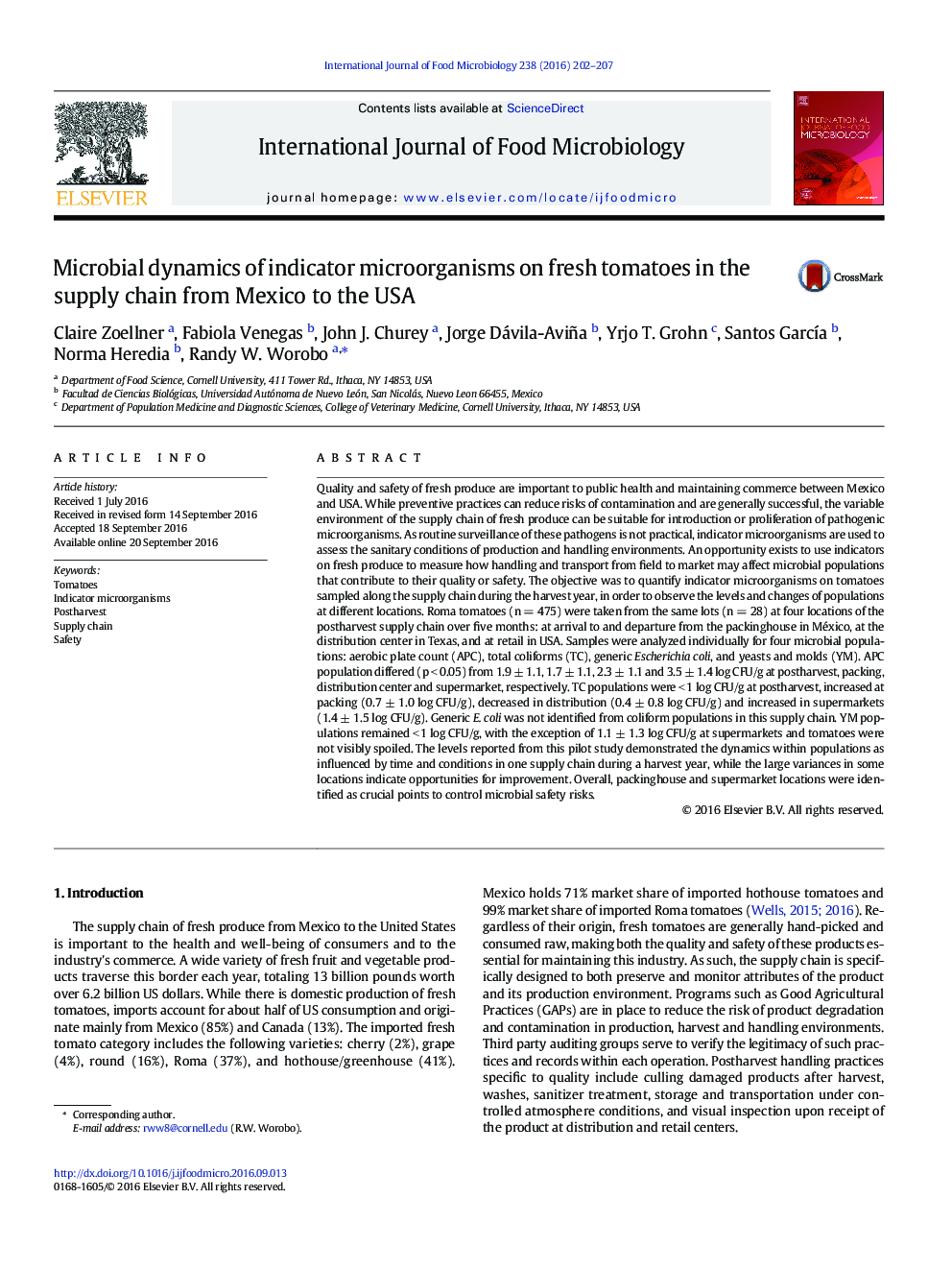| کد مقاله | کد نشریه | سال انتشار | مقاله انگلیسی | نسخه تمام متن |
|---|---|---|---|---|
| 4366134 | 1616545 | 2016 | 6 صفحه PDF | دانلود رایگان |
• Indicator population dynamics were observed on tomatoes in a supply chain.
• Aerobic plate counts did not change at packinghouse, highest at supermarket.
• Low coliform detection at postharvest (15%), highest at packing and supermarket
• Low yeast and mold counts overall (< 4 log CFU/g) indicated absence of product spoilage.
• Generic E. coli was not detected on tomato samples in this supply chain.
Quality and safety of fresh produce are important to public health and maintaining commerce between Mexico and USA. While preventive practices can reduce risks of contamination and are generally successful, the variable environment of the supply chain of fresh produce can be suitable for introduction or proliferation of pathogenic microorganisms. As routine surveillance of these pathogens is not practical, indicator microorganisms are used to assess the sanitary conditions of production and handling environments. An opportunity exists to use indicators on fresh produce to measure how handling and transport from field to market may affect microbial populations that contribute to their quality or safety. The objective was to quantify indicator microorganisms on tomatoes sampled along the supply chain during the harvest year, in order to observe the levels and changes of populations at different locations. Roma tomatoes (n = 475) were taken from the same lots (n = 28) at four locations of the postharvest supply chain over five months: at arrival to and departure from the packinghouse in México, at the distribution center in Texas, and at retail in USA. Samples were analyzed individually for four microbial populations: aerobic plate count (APC), total coliforms (TC), generic Escherichia coli, and yeasts and molds (YM). APC population differed (p < 0.05) from 1.9 ± 1.1, 1.7 ± 1.1, 2.3 ± 1.1 and 3.5 ± 1.4 log CFU/g at postharvest, packing, distribution center and supermarket, respectively. TC populations were < 1 log CFU/g at postharvest, increased at packing (0.7 ± 1.0 log CFU/g), decreased in distribution (0.4 ± 0.8 log CFU/g) and increased in supermarkets (1.4 ± 1.5 log CFU/g). Generic E. coli was not identified from coliform populations in this supply chain. YM populations remained < 1 log CFU/g, with the exception of 1.1 ± 1.3 log CFU/g at supermarkets and tomatoes were not visibly spoiled. The levels reported from this pilot study demonstrated the dynamics within populations as influenced by time and conditions in one supply chain during a harvest year, while the large variances in some locations indicate opportunities for improvement. Overall, packinghouse and supermarket locations were identified as crucial points to control microbial safety risks.
Journal: International Journal of Food Microbiology - Volume 238, 5 December 2016, Pages 202–207
